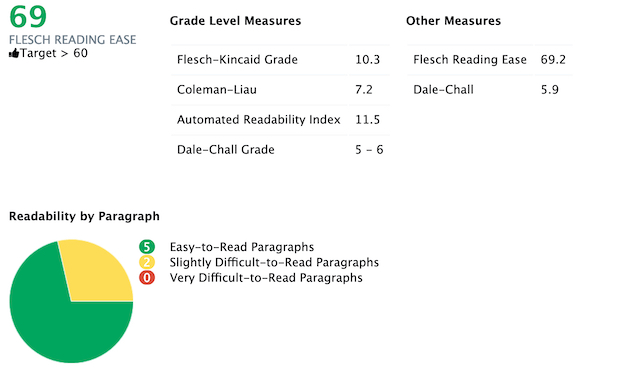
It’s almost time for school to start, and in the middle of a pandemic, it might be hard to find your usual enthusiasm. But we’re here to help! A great teaching book can really light that fire under you and get you excited about returning to the classroom.
I’ve divided this list into three sections: classroom management, teaching diverse learners, and general pedagogy. That means there is something for everyone here. So find the books you need, lay out by the pool, and find your mojo again.
Books 1–5: Classroom Management
You can create the best lessons in the world, but without good classroom management, none of it matters. If you can’t control your class, they will control you. Even the most experienced teachers can use a classroom management refresher because every year and group of students is different.
1. The First Days of School: How To Be An Effective Teacher
You know this classic had to be on the list, right? Harry and Rosemary Wong’s book has stood the test of time. We’re sure you read it early on in your teaching career or maybe when it first came out in 1997. But it’s a great book to revisit every now and then. Did you know there is a whole section on being an effective veteran teacher? Yeah, I had forgotten that, too.
The premise behind this book is that the first days of school set the tone for the entire year. It covers preparing your class, making seating charts, and setting up a discipline plan. It also covers designing strong lessons and getting your kids to do them. If you could only read one book on teaching, this is the one you need.
2. Teach Like A Champion 2.0
Doug Lemov originally had 49 techniques for great classroom management. The second edition extends that to 62! But don’t get overwhelmed. It’s not a laundry list of teaching techniques. Many of these are things you already do. But Lemov explains how all of his methods work together to put students on the path to college.
Lemov believes that great teaching can be taught. He explains how to establish a strong classroom culture. And he helps you set high expectations with strategies like “no opt out,” which doesn’t let kids get away with just saying “I don’t know.” It’s a great book that unravels the mysteries of classroom management and child psychology.
3. Whole Brain Teaching for Challenging Kids
There are many facets of whole brain teaching, but this bestselling book by Chris Biffle focuses on classroom management. I loved this book, although I will give the caveat that this is best for elementary and middle school teachers. It’s also a strategy you need to implement on day one because your kids might find it a little weird at first.
This method uses call-and-response cues for transitions, a scoreboard for behavior motivation, and various assessment strategies for a class that actually listens. It covers how to create behavior agreements with your most challenging students. If classroom management has been an issue for you, definitely read this book before the new school year.

4. Pre-Referral Intervention Manual
This book isn’t so much a read-by-the-pool book as it is a reference to have in your classroom. And it’s a pricey one. I recommend asking your principal if they can buy a few copies for your campus. My old school had one copy per department that we could share. We called it the “PRIM,” and it was a lifesaver.
You know when you feel like you’ve tried everything with a challenging student? This massive book covers every possible negative behavior and a list of interventions to try. Many of these interventions are creative, and you might have never considered them. This will keep kids out of the principal’s office and in your classroom ready to learn. I truly believe every teacher needs to be familiar with this book for those challenging students.
5. Teaching With Love & Logic: Taking Control of the Classroom
Every teacher has a slightly different classroom management style. If you are more of a “love them through it” type of person, this is the book for you. Love and Logic is a psychology-based model for working with children. This book, by Jim Fay and David Funk, is about applying those techniques to the classroom.
Many of the Love and Logic principles focus directly on communication. The goal is to put the power of good behavior in your students’ hands. There is a focus on natural consequences and giving students choices (you can sit quietly by yourself, or I can call your mom: it’s your choice). It teaches you to use “I” messages when communicating with students and staying calm even with the most challenging kids.
Books 6–9: Teaching Diverse Learners
No class is homogenous. As teachers, we are often teaching students with very different life experiences from us. And a lot of times, loving them just isn’t enough. Here are some books to help you reach and teach your diverse students.
6. Raising Race Questions: Whiteness and Inquiry in Education
It is especially important now to address racial issues in the classroom. Often, our teaching methods might come across as racist, even if we don’t mean to be. Saying things like “I don’t see race” or “I was poor growing up, too” is dismissive of our students’ racial struggles. This book by Ali Michael addresses these uncomfortable issues in a non-guilt-inducing way.
The goal of this book isn’t just about creating a multicultural classroom. It’s about creating an actively anti-racist classroom. It helps get rid of many of the stereotypes and explains that true equity doesn’t mean treating every student the same. The link is for the most recent edition, but the 2010 edition is wonderful, too.
Why Are These Books So Great?
We're halfway through our list of the best books for teachers. But why are these books so great?
As teachers, we know that taking in information is a far more complex process than it might seem on the surface. These books are all written in a way that gets their central messages across as clearly as possible. The steps they tell you to follow aren't always easy, but they are well explained and actionable. As soon as you start reading, you know what these books are going to do for you and how they're going to do it.
These are lessons we can take on in our own teaching. When you're producing classroom materials, why not run them through ProWritingAid? The editing tool will do so much more than check your grammar. You can check the reading level of pieces of text by running the Readability report.

Readability Grade Scores correspond to US school grades, helping you assess which materials to use for your classes. You can find out more about using ProWritingAid and other ed-tech in the classroom here.
Now, back to the list!
7. Teaching With Poverty in Mind: What Being Poor Does to Kids’ Brains and What Schools Can Do About It
Living in poverty quite literally changes a child’s brain. There is ample research about the long-lasting effects of growing up poor. Eric Jensen explains what poverty is and how it affects students. He wants us to move past a culture of excuses to actually help these kids succeed.
This is a tiny book that packs a big punch. Anyone who teaches economically disadvantaged students needs to read this book. It will help you become the most effective and supportive teacher you can be. If you can, get your whole school on board to read this book along with you.

8. For White Folks Who Teach in the Hood... and the Rest of Y'all Too: Reality Pedagogy and Urban Education
Christopher Emdin has a theory called “reality pedagogy,” and it will challenge everything you thought you knew about teaching. This book is full of real stories, research, and practical strategies to create a safe classroom that is effective in reaching the students who many dismiss as “unteachable.”
Emdin wants kids to become experts in their own learning. He challenges you to build a family structure in your classroom because these kids need community. And he explores ways to use culturally relevant materials in your lessons so that your students are excited to learn. I believe this bestseller should be a requirement for all teachers who teach in ethnically diverse schools.
9. Safe Is Not Enough: Better Schools for LGBTQ Students
This generation of students is much more open about their identities. It’s great that they don’t feel the need to keep a part of themselves hidden. But how do we make sure they know they are accepted in our classrooms? Keeping them safe from violent bullies is often all schools really do. But as Michael Sadowski writes, that’s just not enough.
Students should feel accepted for who they are when they walk into a school. This book talks about how schools can help these students achieve their full potential. It’s a campus-wide effort that isn’t as simple as a Gay-Straight Alliance. Sadowski talks about inclusive curricula, community outreach programs, and how teachers can become mentors and role models.
Books 10–12: General Pedagogy
We’ve covered how to reach diverse learners and how to have effective classroom management. But now we actually have to teach! Here are some of my favorite pedagogy books that are good for every subject.
10. Total Participation Techniques: Making Every Student an Active Learner
My first principal referred to the old-school style of teaching as “sit and get” – as in, the students sit and get the information we tell them. But you know just as well as I do that that doesn’t result in much retention. And bored students are often poorly behaved students.
Pérsida and William Himmele have curated 51 techniques to get every student engaged and actively learning. Total Participation Techniques, or TPT, include some of the psychology of Total Physical Response, a tried-and-true method for teaching English as a second language. But it’s more involved – and more fun – than that. These methods will motivate your students to actually learn.
11. 7 Steps to a Language-Rich Interactive Classroom
My old school district adopted the 7 Steps model to reach our high population of English Language Learners. But the strategies in this book aren’t just for non-native speakers. So many students read, write, and speak far below grade-level. John Seidlitz and Bill Perryman have techniques for every student and help you differentiate for varying language proficiency. And don’t think this book is just for English teachers. Every classroom should be encouraging good verbal and written communication skills.
These aren’t steps that are hard to implement. Honestly, they are so simple that you’ll wonder why you weren’t doing them all along. For example, teaching students what to say when they don’t know what to say is the first step. It’s common sense, but most people don’t think to teach that! There’s always such a negative association with not knowing something. Honestly, there isn’t a single book from Seidlitz Education that I dislike.
12. Making Thinking Visible: How to Promote Engagement, Understanding, and Independence for All Learners
I saved my favorite teaching book for last. I read this book very early on in my teaching career, and I consider it the most important book I read about teaching. The basis behind this book is metacognition, or in layman’s terms, thinking about thinking. We often hear “make kids responsible for their own learning” and “be a facilitator instead of just lecturing.” But how do we actually make them do this?
Ron Ritchhart, Mark Church, and Karin Morrison explain the science of thinking and how to teach your students to be aware of the process of learning. There are many specific teaching strategies that can be applied across all curricula in any lesson you can imagine. These strategies guide students critical thinking skills and academic discussion in a way that is logical and not overwhelming. I recommend this book to every teacher I talk to.


